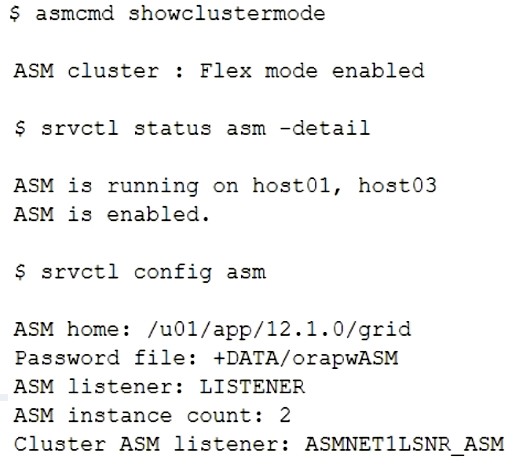Oracle 1z0-078 - Oracle Database 19c: RAC, ASM, and Grid Infrastructure Administration
Examine the output of theasmcmdandsrvctlcommands:

Then you execute this command:
$ srvctl relocate asm -currentnode host03 -targetnode host02
Which three statements are true regarding the execution of this command based on the output shown? (Choose three.)
Which three statements are true about undo management in a RAC environment? (Choose three.)
Examine this command and output:

Examine this command:

Which statement must be true for the successful execution of the second command?
You performed these steps to disable an ADVM volume containing an ACFS file system:
1. Dismount the file system.
2. Disable the volume with the ASMCMDvoldisablecommand.
Which two statements are true regarding the actions performed? (Choose two.)
Examine this command:

Which two statements are required for this command to succeed? (Choose two.)
Which two statements are true regarding the default service that is automatically created upon PDB creation in a RAC database environment? (Choose two.)
Examine this query and output:

Performance analysis revealed severe SQ enqueue contention on the SEQ1 sequence.
TheSEQ1sequence is incremented from all instances equally and is frequently used.
Which two statements should you execute to reduce SQ enqueue contention? (Choose two.)
You administer a RAC database that currently runs on a four-node cluster but which has three instances.
Which two statements are always true about redo logs for this RAC database? (Choose two.)
Which three statements are true concerning activation of a user-defined policy in Oracle 19c Clusterware? (Choose three.)
Which two statements are true about Transparent Application Continuity in Oracle RAC 19c? (Choose two.)



